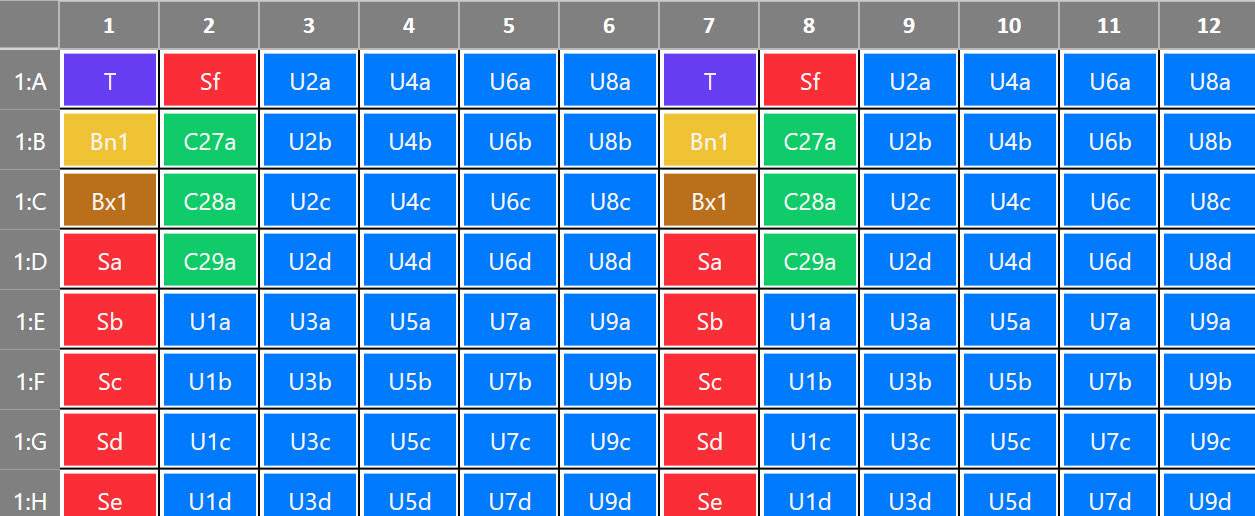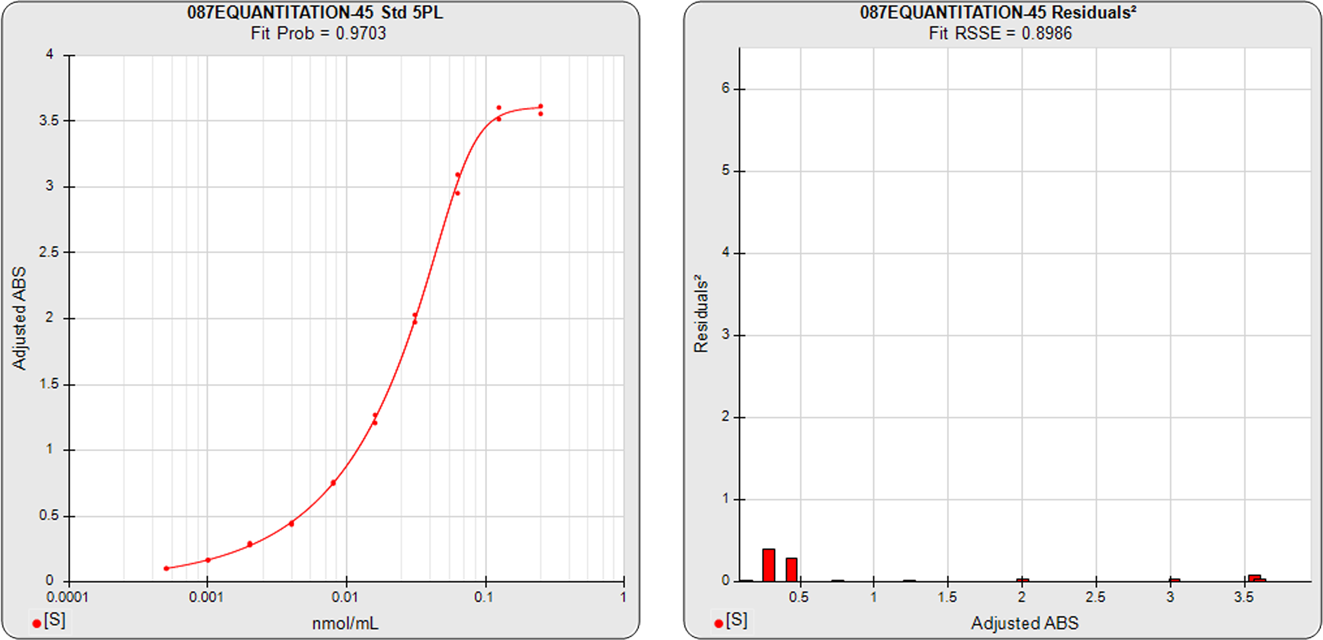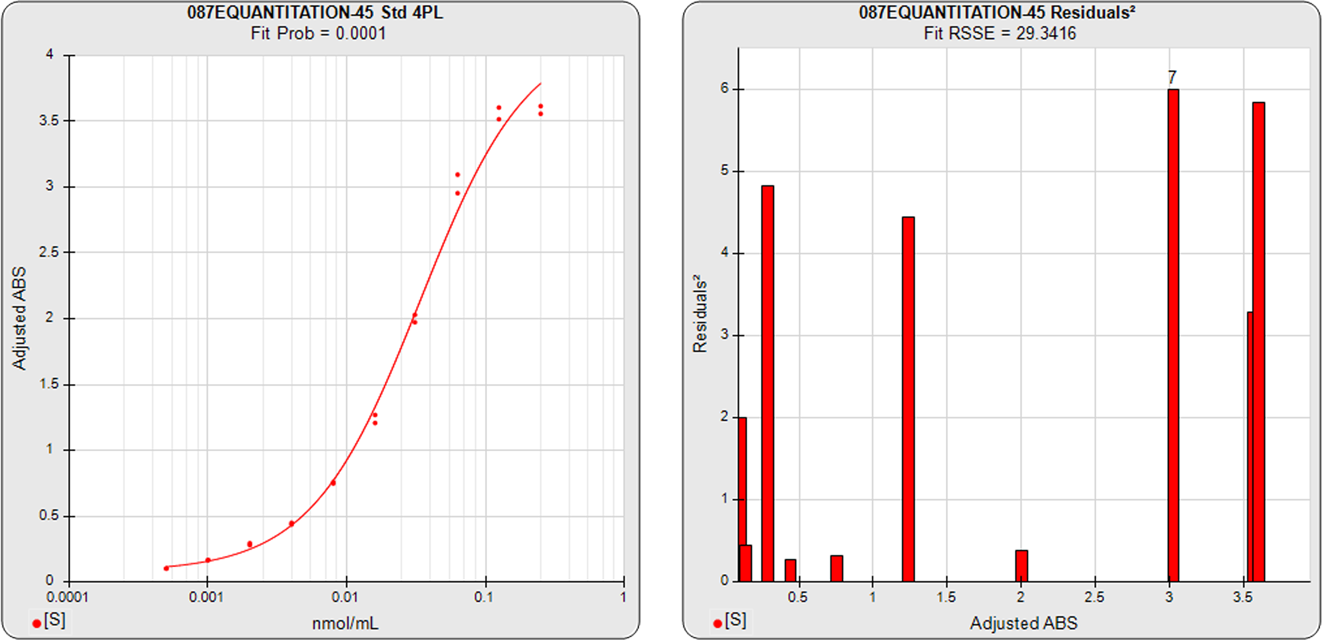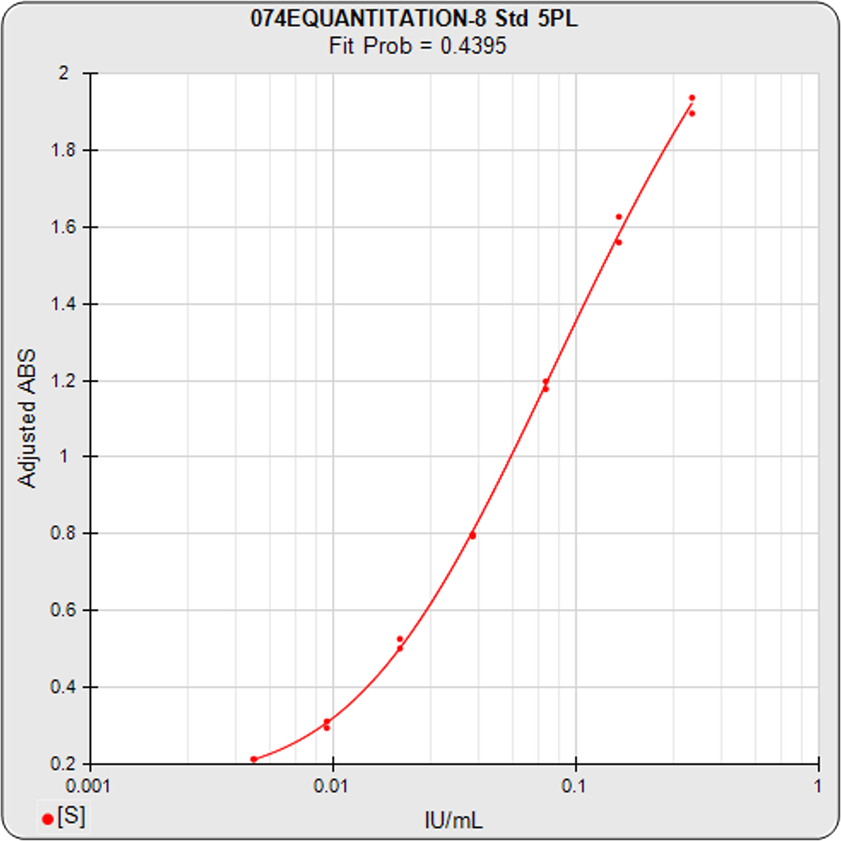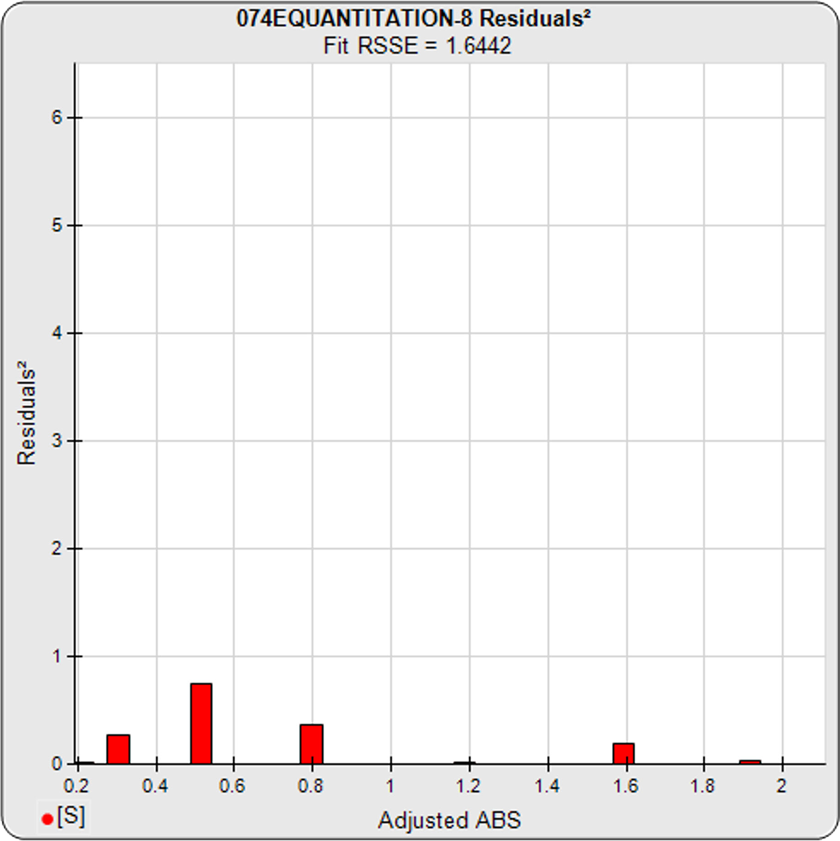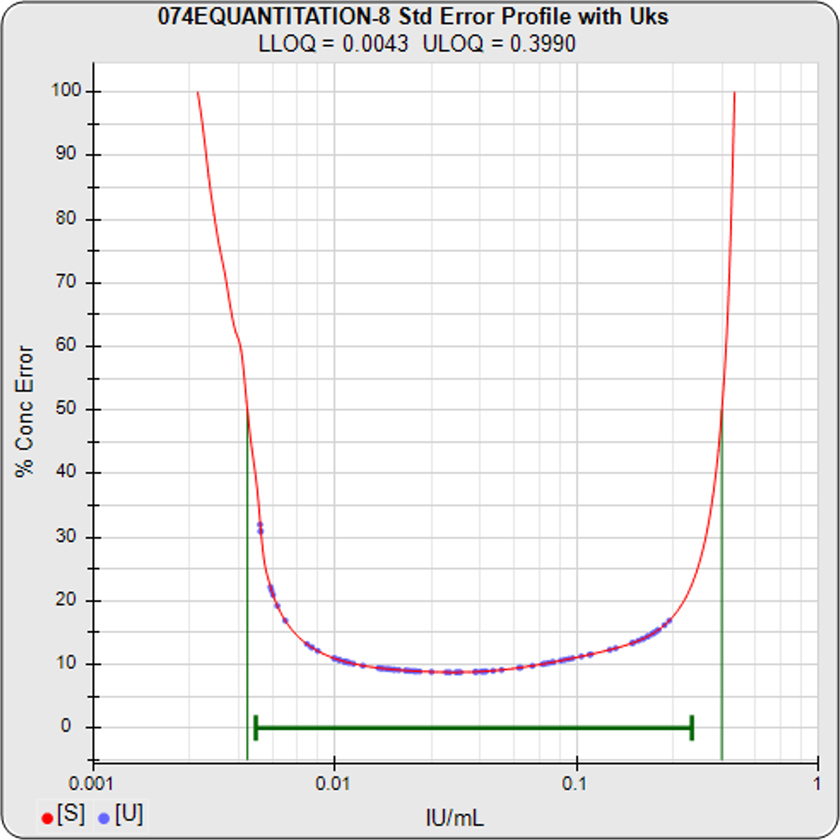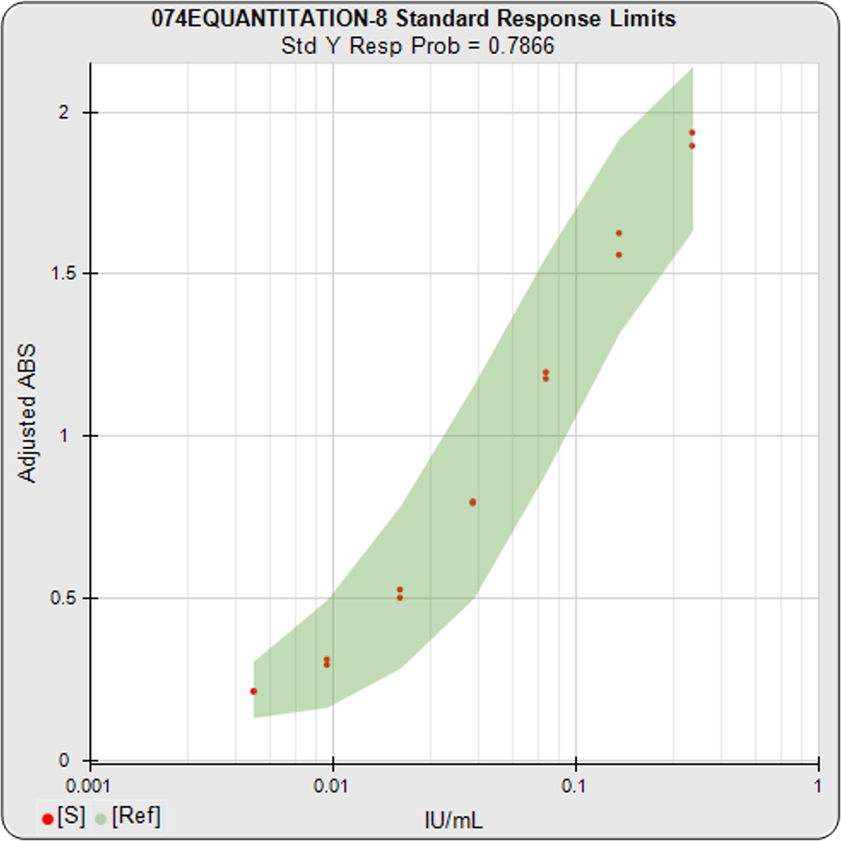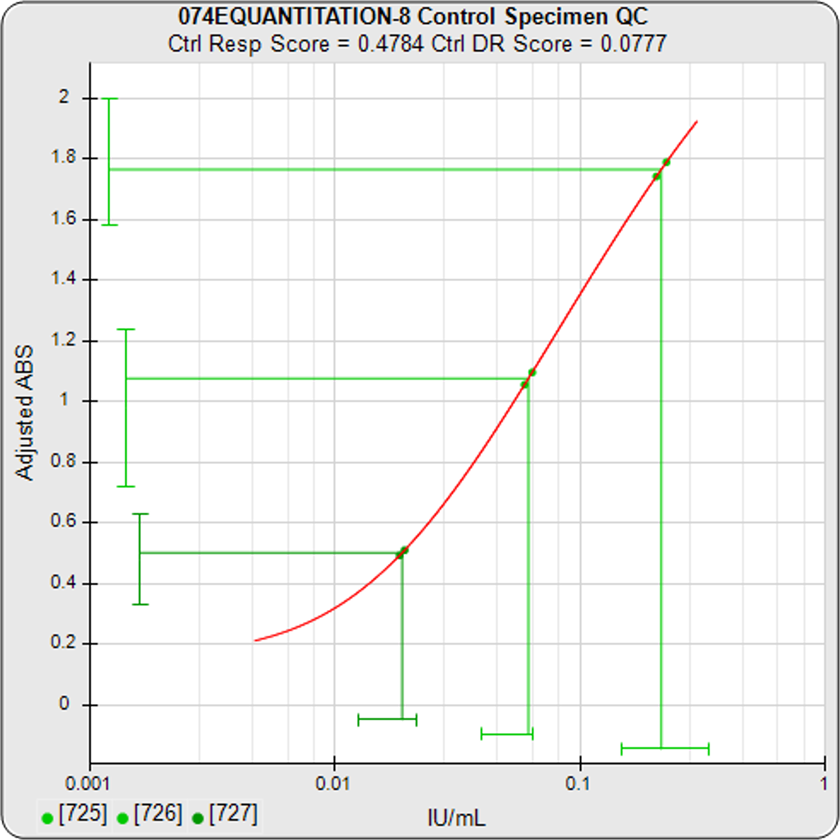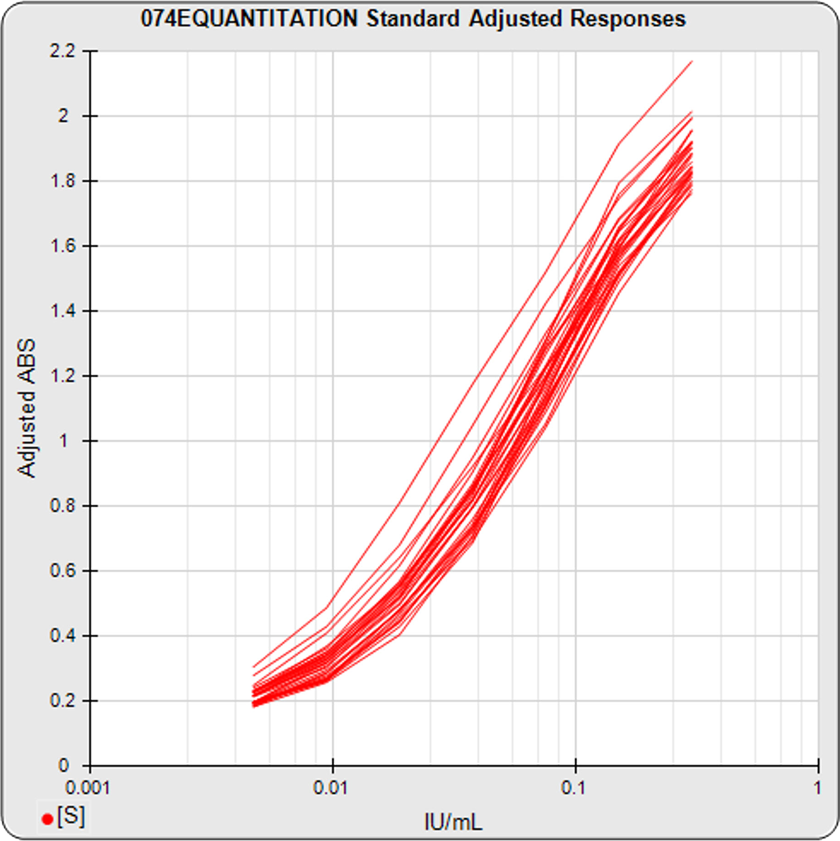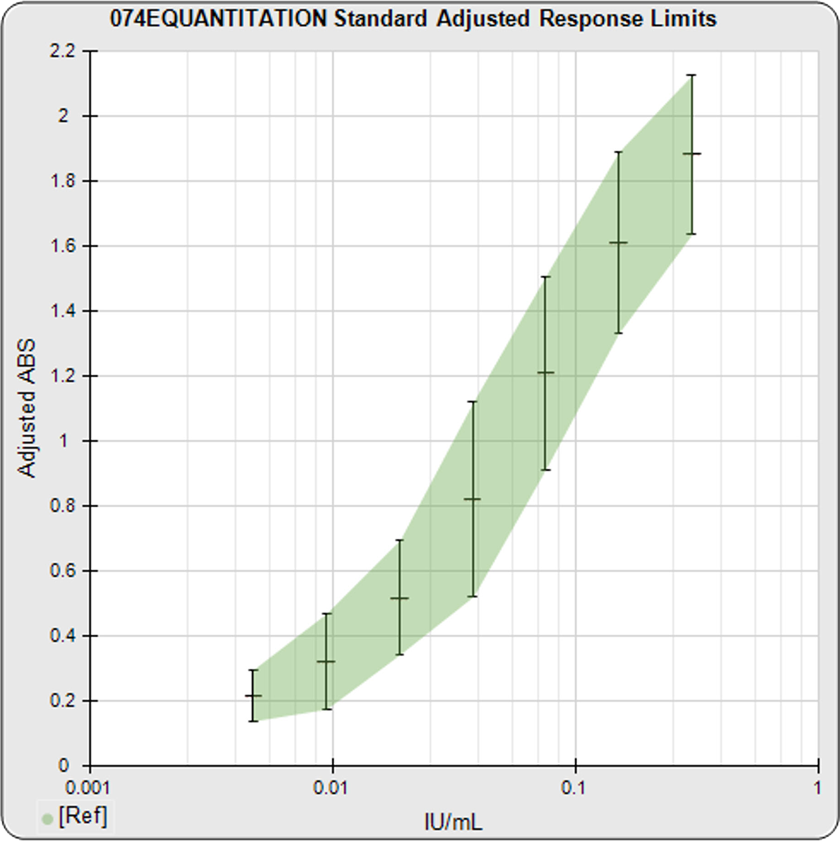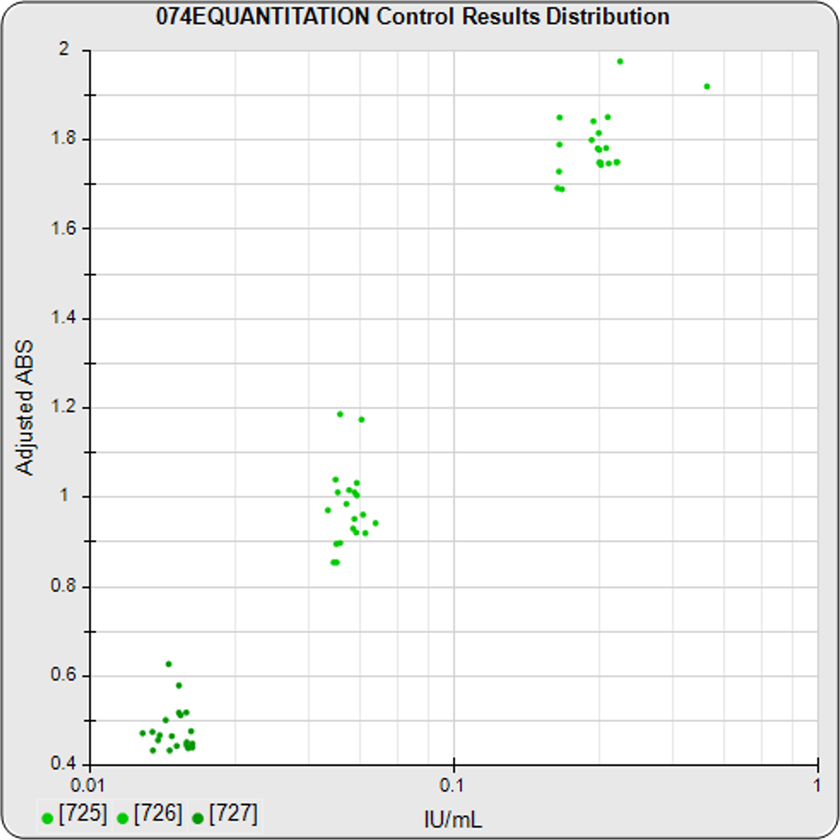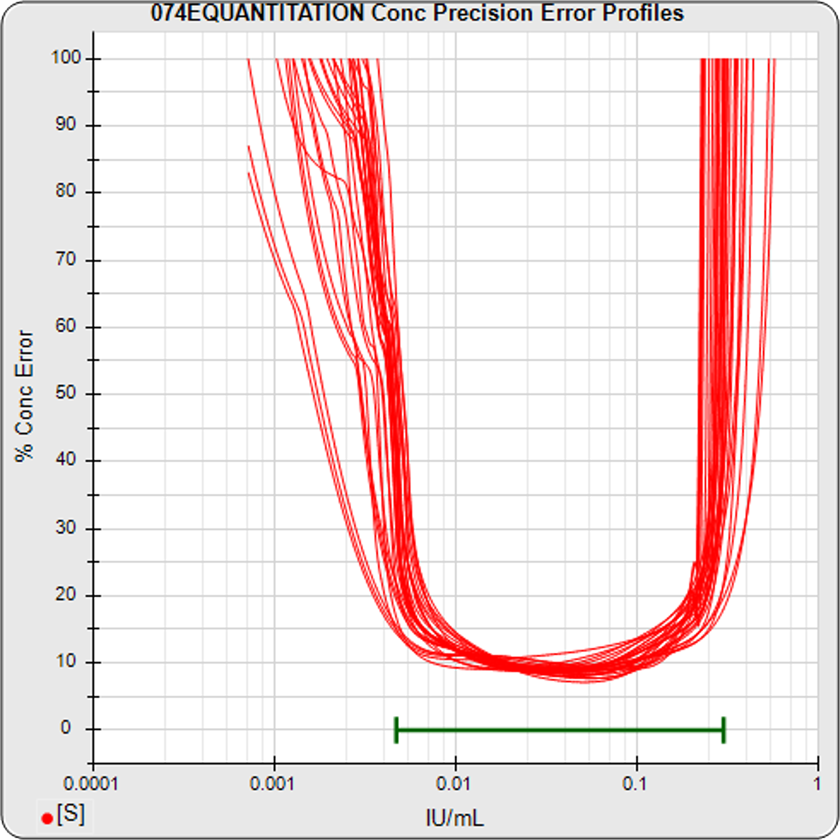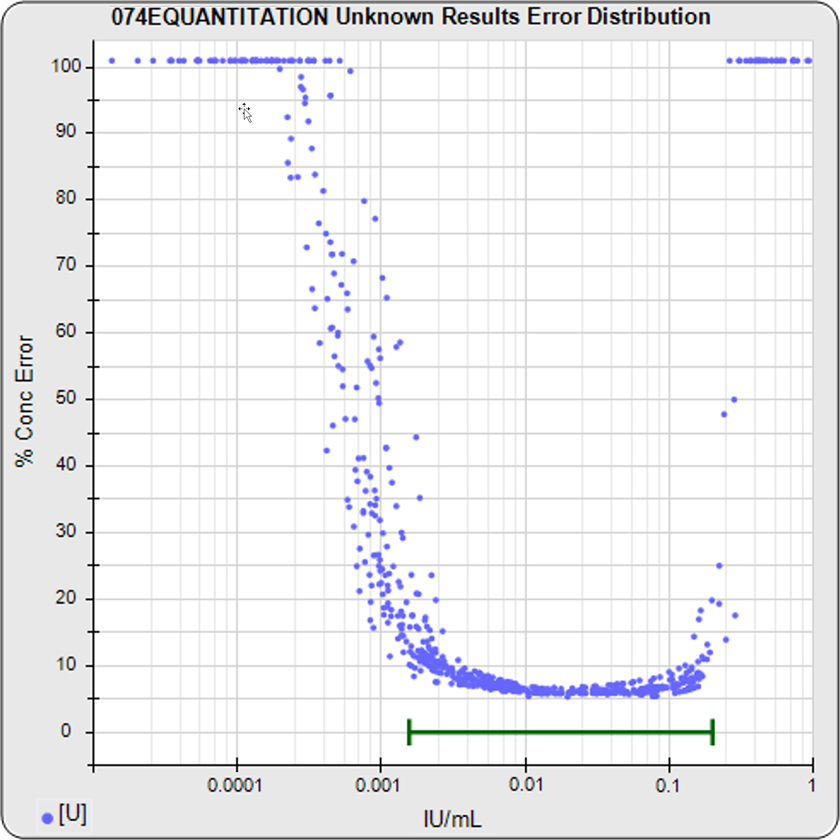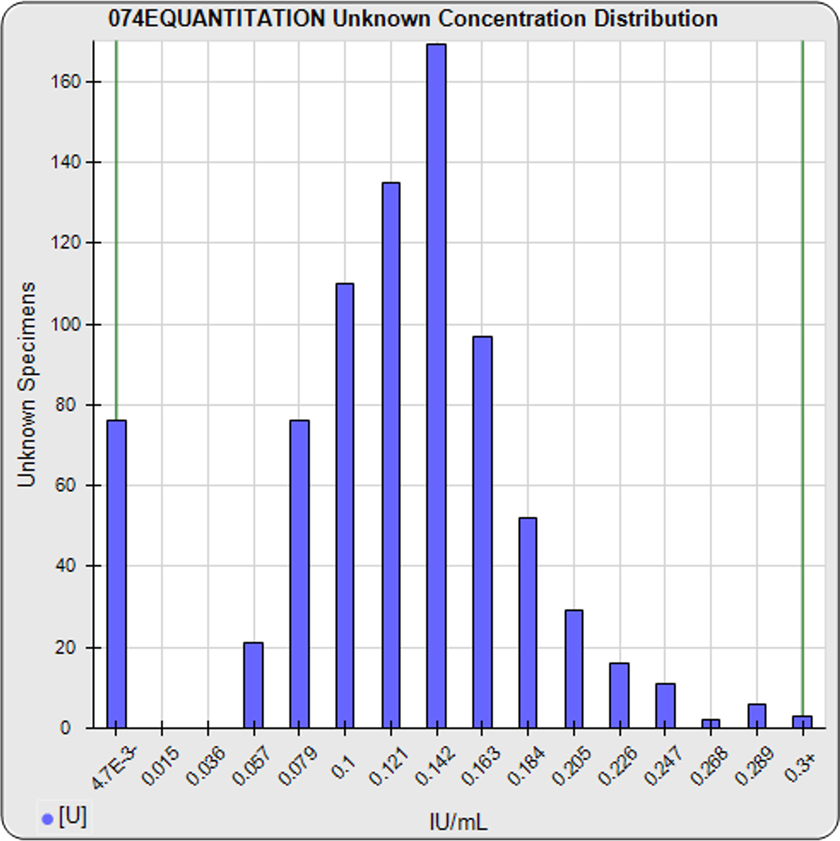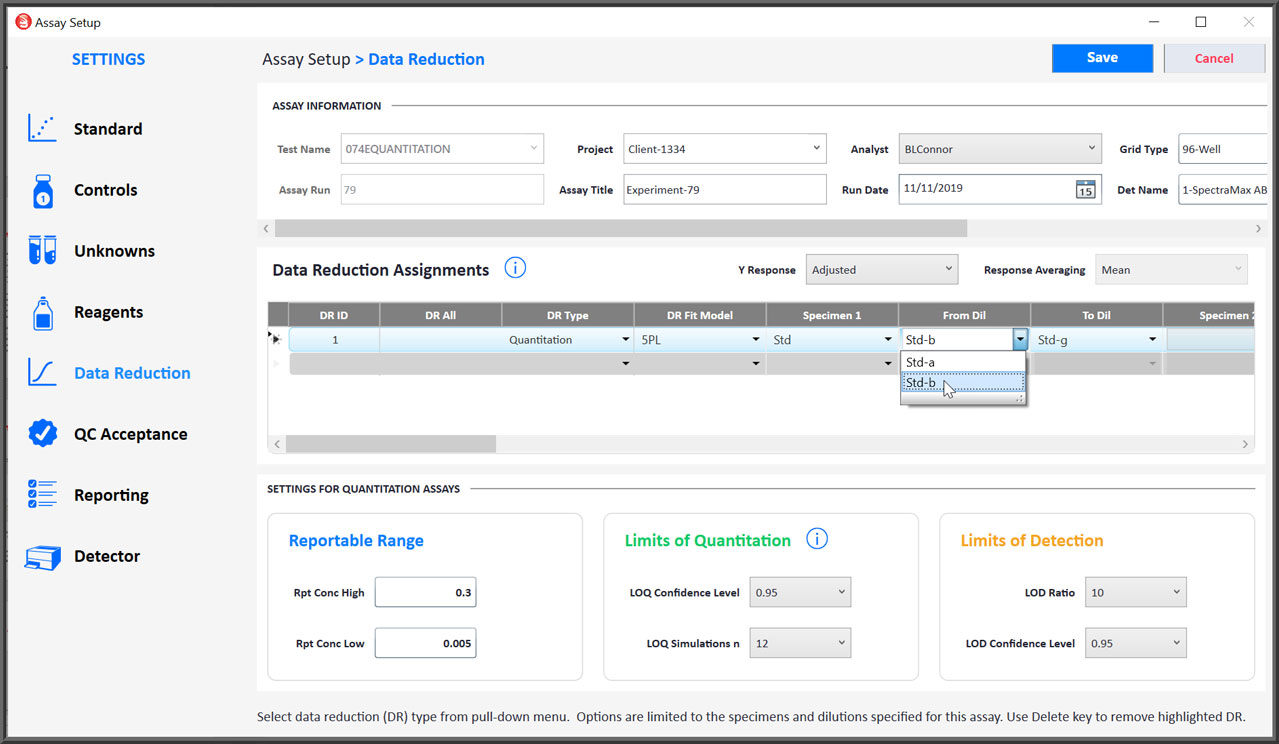ELISA/LBA Assays
Run ELISA, ECL, EIA, FIA, LIA, RIA, and Label-Free Assays On All InstrumentsSee your data in STATLIA MATRIX.
Easily Set Up, Analyze and Manage Your ELISA and Other Quantitation Assays
- Gold standard 5PL and 4PL curve fitting
- Accurate weighting computed from your pooled assays
- Weighted average result computed from multiple dilutions
- Mask outliers automatically with detailed justification
- Run concentrations or titers
- Dilution wizards and placement wizard makes setup easy
- Placement templates stored
- Color coded placement printouts
Expand Usable Range of Your ELISA Assays with the Industry Leading Gold Standard for 5PL
Asymmetric Curves
Most ELISA curves are too asymmetric to be fit accurately with the symmetric 4PL, like the assay above. The 5PL curve and dilution squared residuals (left two graphs) and the 4PL curve and dilution squared residuals (right two graphs) were computed using the same data. The dilution squared residuals graphs show the squared residual errors (red bars) between the observed responses and predicted responses off the curve divided by their estimated variance for each dilution of that curve. See Tech Note: 5PL and 4PL Curve Fitting for more information.
The sharp transition at the upper asymptote and the more gradual transition to the lower asymptote is typical for ELISA assays. These bad fits at the upper and lower ends of the 4PL curves show why an appropriately weighted 5PL can extend the usable range of asymmetric curves up to an order of magnitude in sensitivity. STATLIA MATRIX’s 5PL is the gold standard in analysis software and will easily fit your assays’ curves whatever their shapes. The manuscript: The Five Parameter Logistic: A Characterization And Comparison With The Four Parameter Logistic, has been requested more than 5,000 times and been cited more than 300 times. STATLIA MATRIX is the industry software with the best weighting to meet the FDA guidelines for “appropriate weighting”. See Tech Note: Curve Weighting for more information.
Informative Graphs Highlight the Performance of ELISA and Other Quantitation Assays
Easily Set Up, Analyze and Manage Your ELISA and Other Quantitation Assays
- You can select either the 5PL, 4PL or linear weighted regression curve fitting for Quantitation assays.
- End point hooks can be masked from the regression curve or line by starting and/or ending the dilution series at a different point.
- Set an optimal reportable range for your test. Results outside the range are reported as < or > the reportable range limit.
- Set an acceptable concentration error threshold for your results in QC Acceptance.
- The settings for the Monte Carlo concentration error estimates and limits of quantitation can be adjusted.
- You can set more than one data reduction (DR ID) for an assay, for example you can compute a 5PL and a 4PL to compare the results.

